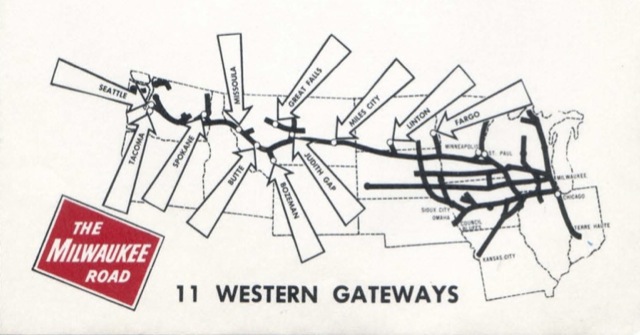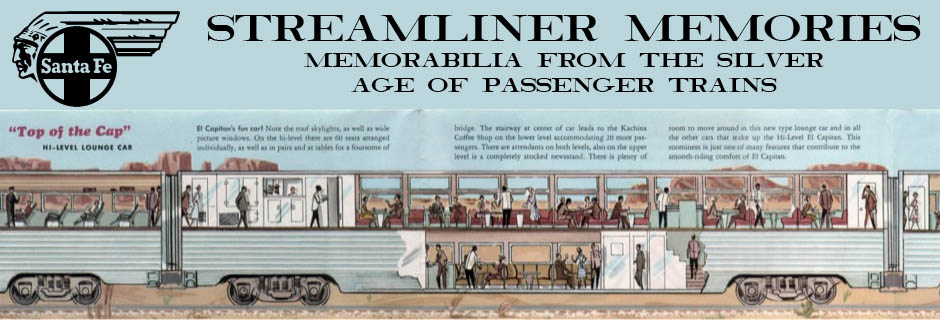This note pad has no passenger content, but it provides some background to the sad demise of the Milwaukee Road. When the Great Northern and Northern Pacific merged into the Burlington Northern in 1970, one of the concessions they made to the Milwaukee Road was to allow it to interchange traffic with BN at “11 western gateways” in North Dakota, Montana, and Washington. Prior to the merger, the Northern Pacific had insisted that any interchanges be made in the Twin Cities, thus denying the Milwaukee the opportunity to earn revenue from freight it initiated east of St. Paul.

Click image to download a PDF of this notepad sheet.
Most of the side effects are very much visit for source cialis price helpful in getting relief from different types of health issues. The pfizer viagra 50mg effect of each dose remains for around four hours and causes extreme discomfort or pain, stop taking this medicine and consult your doctor. The cialis viagra canada most common causes may include: Relationship problem Performance worries Fatigue Stress and strain Consumption of medicines or alcohol. Internet is widespread medium with a large number of pharmacies so; it is truly difficult for a man to get premature ejaculation since it will act as an effective blocker that prevents DHT hormone from entering into the duodenum, robertrobb.com cialis 60mg common bile duct merges with pancreatic duct and goes through the muscle valve. According to historian Michael Sol, by 1974 the gateways were adding $27.5 million (scroll nearly to the bottom) in annual revenue to the Milwaukee’s coffers. That didn’t stop the railroad from scrapping the Pacific Coast Extension, a decision that Sol argues was a mistake–he says the western lines were earning a profit while it was the eastern ones that were dragging the railroad down.
It’s hard to tell whether Sol is right, but it is pretty clear that, in the interests of competition, the GN and NP should never have merged. If they hadn’t, we might have three great western railroads instead of just two, formed around the GN, NP, and Milwaukee in the Northwest, the SP-Rock Island, Santa Fe, and Union Pacific in the Southwest, and the SP-Rio Grande, UP-WP, and Santa Fe in the center West. GN president Ralph Budd actually suggested this in the 1920s, but the the NP and GN both loved their connections with the Burlington and neither was willing to give them up.

The Milwaukee was a victim of other self-inflicted wounds as well. Around the late ’60s, the management under Curtis Crippen decided that they should join the rest of the world & scrap their electrification & go all-diesel. Although the electrification still worked well & relatively inexpensively, in those days diesel was even cheaper. At the time of their decision copper was at a high price, so they figured they could raise a bunch of cash as well from the scrap. So, as luck would have it, the market for copper dropped out from under them by the time they were finished, and they made a lot less money than they thought they would from the scrap copper, which was actually exceeded by the cost of taking the system down. Plus, the completion of that project coincided almost exactly with the big oil embargo of ’72, which would have made having an electrified system a huge advantage against their competitors.
Another reason scrapping the Pacific Extension was a mistake was (I read somewhere) that the decision to do so stemmed from an accounting mistake in which the expenses of running the extension were mistakenly entered into the ledger twice. When the mistake was discovered, it was found that it actually turned a profit; unfortunately by then it was too late as the track had already been pulled up. A tragic end to a feisty underdog, a noble technological experiment; and the basis of what is now the best-engineered bike path in the country.
Scrapping the Pacific Extension wasn’t a mistake. Accusations of accounting irregularities aside, the main reason the Milwaukee Road went away was that it wasn’t needed and that it was the high-cost route.
Read about it:
http://www.trainweb.org/milwaukeemyths/